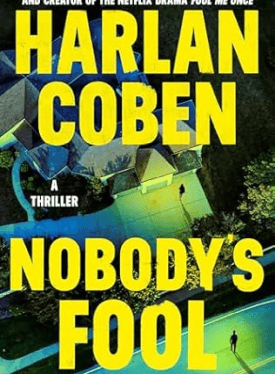Inspector Montalbano Books In Order
Book links take you to Amazon. As an Amazon Associate I earn money from qualifying purchases.Publication Order of Inspector Montalbano Books
Chronological Order of Inspector Montalbano Books
Salvo Montalbano
Salvo Montalbano is a typical Sicilian chock full of all of the idiosyncrasies and above all else good detective work. He has his own ways of doing things and is seen be his superiors as a loose cannon. He is constantly dealing in a world of shady characters, with different connections, who operate in a your scratch my back and I’ll scratch yours sort of dynamic.
Yet through it all the Inspector manages to remain true and uncompromising at least to a point where he can still live with himself. The character involves a great deal of humour but the author also adds hard criticism of both Italian and Sicilian political and social situation.
Unlike most detective novels where these contexts are simply skimmed over or ignored altogether, these elements form a backbone to the tales of the inspector. Montalbano is the head of the Vigata police precinct. As such he must balance the desires of his superiors, the reality of the crime rate in the area and, of course his personal life.
To make matters even murkier there are two factions within the force that are trying to control the way things are done. The ideology coming from Milan is a standardized regulated way of doing police work. This northern view demands and increase in transparency and a desire to do things by the book. On the opposite side of the spectrum in the southern outlook to law enforcement that involves intricate interpersonal connections that effect how justice is carried out.
What makes Inspector Montalbano so effective is his ability to balance between these two opposite factions; it is not always an easy task but he has a knack of keeping everyone happy. Any mention of Italy is usually followed by an image of great food.
Inspector Montalbano often eats well-described meals during his adventures, bringing a delightful gastronomic aspect to the series as a whole. The original Italian series of novels began in 1994. The novels were not translated into English until 2002, after 6 novels had already been complete. Stephen Santarelli, whom critics say managed to maintain a distinct Italian feel despite the fact that the stories were being told in English, does the translation.
Beginnings: The Shape of Water
The first installment of the Inspector Montalbano series is a witty tale that allows the reader to fall for the main character and want to know more about him. The village of Vigata is a regular Sicilian town. There are drug dealers and prostitutes of all types but the business is usually done is a discreet manner.
This is all upset when two refuse collectors find the body of Silvio Luparello, One of the city’s main players. The coroner’s verdict is pretty cut and dry’ death by natural causes. Inspector Montalbano has a different take on the events however and decides to pursue the investigation further.
This decision does not sit well with many of his superiors including the police chief and the judge. Montalbano must sift his way through a web of comedic corruption, planted clues, vendetta laced violence and, of course delicious meals to solve the crime.
Beyond the storyline, the reader gets a wonderful glimpse into this part of Sicily. Cammileri does a great job at describing this part of the world, along with its cuisine and the colourful people that populate the area. Here is an authentic look into Sicilian life with just enough over the top characters and interesting situations to make it all work.
Second Helpings: The Terracotta Dog
This is a different direction for the stories in that it deals with a reality of Sicilian life the mafia. It also provides a glimpse into the juggling act that Inspector Montalbano performs in order to keep this peaceful in his corner of the world. The story begins with an ageing, tired underworld boss making a deal with the inspector for his arrest.
The arrest causes Montalbano to be considered for a promotion and garners some media attention. While all of this is being done two crimes are committed and with the help of the arrested crime boss, Montalbano and his cohorts are sent to a secret World War II shelter that is now used by the mafia.
The Inspector quickly find a secret chamber and discovers the mummified remains of two people who are arranged in such a way as to make it look like they are guarding a clay dog. Montalbano must decipher the clues once more and get to the bottom of a crime that was committed 50 years in the past. The characters get deeper and the mystery within a mystery makes this novel even better than the first.
In Other Media
Since 1999 there has been television movies of the Inspector Montalbano adventures being produced in Italy. To date there are 26 separate titles. There were two episodes produced annually for the first 6 years of the run, this number has been increased for the last three seasons to 4. Usually produced at a rate of two annually.
The series is very popular and shows no signs of ending any time soon. Inspector Montalbano is an intelligent competent detective. He manages to wade through the reality of Sicilian life while maintaining his honesty and his integrity. The novels are filled with wonderful character and enough comedic episodes to entertain even the most discerning reader.
This is not gratuitous comedy, but rather real, tangible events that are believable and would be comical if witnessed first hand. Beside the characters, the comedic elements and even the fabulous backdrop that makes up the novels, the often referred to gastronomic reality of the Italian island is present as well. We can almost smell the wonderful dishes that are being prepared and consumed, all whilst immersed into thought provoking mysteries that are intriguing up to the very end.
Book Series In Order » Characters »


 Any issues with the book list you are seeing? Or is there an author or series we don’t have? Let me know!
Any issues with the book list you are seeing? Or is there an author or series we don’t have? Let me know!
I love these books 📚 I have most of them and read a lot of them from the library, I also enjoy Jan Karon. Thank you..,
I’ve enjoyed the first 15 stories. The translations are fine British English slang. What I’d like is a sample page in Camillieri’s language, especially Catarella’s Silicilan conversations just for what one might call an attempt at the American English version.Interesting/ed?
Good morning, thank you for all your hard work and helping me with what series to read. I am a little confused between order of publication of books and
chronological order and why are there different titles on both lists? Thank you for helping me understand this.
Hi Rosemary – there was a minor glitch where the last couple of books weren’t showing up in the chronological order but that is fixed now. Thanks for pointing that out.
Re Rosemary: the author of the books, Andrea Camilleri,wrote the books in a particular order, which is shown as ‘published order’ but some stories related to events before an earlier story, so the ‘chronological order’ shows them in the correct time order. If you want to read them from the start, in time order, then the ‘Chronological Order’ list shows you this.
The books sometimes have a different title in English when published in The UK to that given to the book in The USA.
I was watching an episode titled “Montalbano’s Croquettes” a mystery involving te deaths of a wealthy older man and his younger 2nd wife, a previous flame of Mimi’s; but only half the show was broadcast so i’m left hanging and am in search of the book this story was based on. Unfortunately, reviewing the list of books provided,none come close to reflecting the theme of this broadcast. Any one have any ideas????
It is a short story contained in the recently-published book: “Montalbano’s First Case And Other Stories”. There are more than 20 short stories, about 8 of which were filmed as a part of the TV series.
“Croquettes” is a bad translation – the original word is “arancini”, which are an Italian delicacy – rice balls stuffed with mozzarella in a sauce, and coated in breadcrumbs, then deep fried. “Arancini” means little orange – accurately describing both colour and size!
They originated in Sicily, and Montalbano loves them.